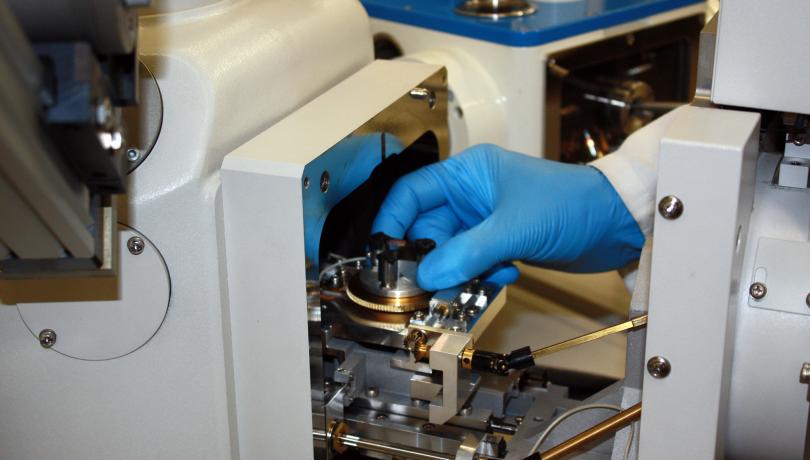A study published by researchers of the ICM in the journal Plos One, and recommended in F1000Prime, shows for the first time the element concentration in individual cells of phytoplankton, including the so-called "light elements" (carbon, nitrogen and oxygen).

A study published by researchers of the ICM in the journal Plos One, and recommended in F1000Prime, shows for the first time the element concentration in individual cells of phytoplankton, including the so-called "light elements" (carbon, nitrogen and oxygen).
The study analyses the elemental composition of dinoflagellates collected in different areas of the Catalan coast. Mariona Segura, a Marie Sklodowska-Curie a researcher at the University of Sheffield (UK), conducted this study as a PhD student at the ICM. She explains that "the results showed that the mass of all elements is not a constant fraction of the cell volume, but rather decreases as the volume of the cell is bigger, excepting the case of silicon and oxygen in diatoms".
Furthermore, the analyses confirmed that diatoms are significantly less dense in carbon when compared to dinoflagellates, and this trend is extensive to other elements, except silicon. This is because the diatoms have intracellular vacuoles and use silicon (an abundant element in the ocean) to form their cell walls (frustules). As a result, diatoms have a low elementary portion but reach a larger size, which prevent them from predation. This provides a clear environmental advantage to diatoms over other plankton organisms.
This study has been made possible by X-ray microanalysis (XRMA), a technique that allows, at the same time, to identify and quantify the presence of carbon, nitrogen, oxygen, magnesium, aluminium, silicon, phosphorus, sulphur, chlorine, potassium and calcium in individual cells that can be collected directly from the sea. José Manuel Fortuño, in charge of the electron microscope in the ICM and who developed the technique with Segura, explains that "this is an accurate technique to determine the elemental portions of individual cells, which subsequently can lead to different conversion factors used to understand and model the biogeochemical cycles". "The research led to design a special microscope slide to simulate a scanning electron microscope (SEM) with the conditions of a transmission microscope (STEM), to avoid the signal of the cell support that interfered in the results”, added Fortuño.
The study suggests that the phosphorus requirement is higher in bacterioplankton, followed by dinoflagellates, and diatoms, finally. This fact gives a clear advantage to diatoms in ecological environments impoverished in phosphorus as the Mediterranean Sea. "According to our results, the phosphorus concentration of cells of the same gender who grew up under different nutrient conditions was the same, suggesting that the share of phosphorus of these cells is at a critical level”, concludes Dolors Blasco, director of Mariona Segura’s PhD.
Paper
- Mariona Segura-Noguera, Dolors Blasco, José Manuel Fortuño. “Taxonomic and Environmental Variability in the Elemental Composition and Stoichiometry of Individual Dinoflagellate and Diatom Cells from the NW Mediterranean Sea”, PLoS ONE 11(4): e0154050 (2016).
- F1000Prime.